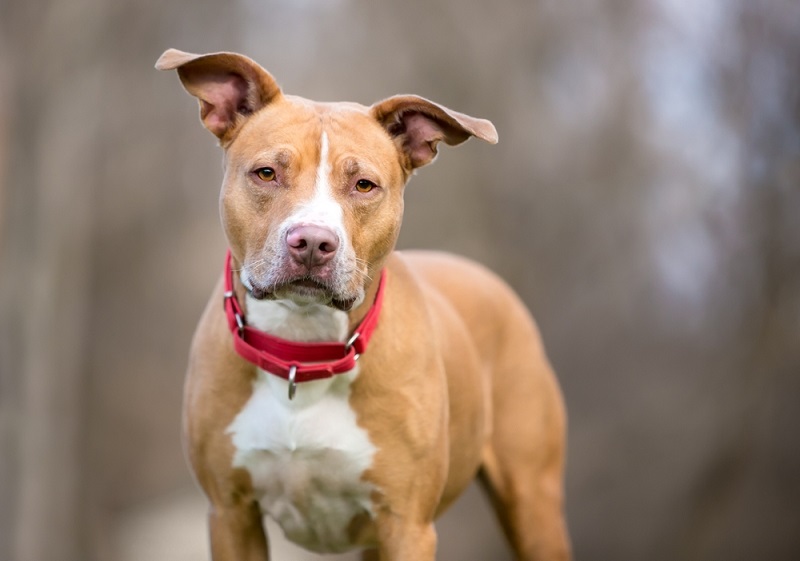Every pup parent knows: Dog ears say a lot. They’re perked and alert when you use their favorite four-letter word, and relaxed when comfortable and content after a long day at play.
But what about when your dog’s ears communicate something more unpleasant, like itchiness or irritation? While ear itching and head shaking are normal for most dogs, an unusual amount of this can be a sign something isn’t quite right. The culprit may be an ear infection or ear lice.
Ear lice in dogs is a common issue, and luckily, there are several ways to treat it. Read on to learn how to spot signs of an ear lice infection in dogs and simple steps you can take to treat and prevent them.
What Is Ear Lice?
Ear lice, or otodectes cynotis, are tiny parasitic tiny mites that take up residence deep in your dog’s ear canal.1 Ear lice are in the same family as spiders and ticks, but much smaller. Barely visible to the naked eye, these parasites might look like little white dots or specks on your pup’s inner ear.1 Other signs of an ear lice infection might be long, brown oval eggs typical of adult ear lice.1
While they don’t bite, ear lice feed on naturally occurring wax and oils in your dog’s ears, and they can cause discomfort or irritation.1 Dogs with floppy ears may be particularly susceptible to ear issues, as their ears can trap moisture and debris, creating an inviting environment for parasites. Because ear lice can be quite tricky to spot, the biggest indication your pup may be infected is the symptoms they exhibit (more on this later).1
Life Cycle of Ear Lice
Adult ear lice have a relatively short life cycle of about two months, but they continuously reproduce during that time, which can prolong ear mite infection.2 It takes approximately three weeks for an egg to develop into an adult. After maturation, ear lice survive primarily off the host and don’t live very long in other environments.2
Can Ear Lice Affect Humans?
When it comes down to it, ear lice prefer pups over people. In some cases, ear lice can cause a temporary itchy rash on the surface of the skin, though it’s unlikely.2 That said, ear lice are highly contagious to animals and can spread quickly in a home with more than one pup or other pets, like cats or rabbits.2
How Dogs Contract Ear Lice
It may sound scary, but don’t panic—ear lice in dogs is the second most common external parasite after fleas.2 Puppies can be especially prone, but dogs of any age can be affected.2
Ear lice are just as contagious as head lice are to people, and there are several ways your pup may have contracted this pesky parasite including3:
- Close contact with other infected dogs or cats
- Close contact with an infected environment, like the dog park or doggie daycare
- Contact with contaminated bedding or toys
If you suspect your pup may have come in contact with an infected animal or environment, check for signs and symptoms before you proceed with treatment.

Signs and Symptoms To Watch For
Ear lice might not be visible to the human eye, but there are signs to watch for that could indicate an ear lice infection. Keep in mind that clinical signs may vary from one dog to another, and other ear issues can present similar symptoms.
That said, here are some signs and symptoms to look out for if you think your pup may have an ear lice infection:
- Discomfort and sensitivity – You know better than anyone how much your pup enjoys a good ear scratch or rub. If your dog’s ears are healthy, they’ll likely enjoy their daily dose of affection, but if they pull away or their ears are sensitive to touch, it could be a sign of an ear lice infection.3
- Itching and irritation – Apart from sensitivity, irritated and itchy ears are often a telltale symptom of ear lice.3 If your dog is itching their ears and shaking their head more than usual, look out for other signs of infection, too.
- Redness and inflammation – Redness and inflammation of the inner ear and ear canal are common in dogs affected by ear lice.4
- Rash and hair loss – Rash and hair loss is a common side effect of persistent itching. Check for inflamed patches of skin and areas of hair loss in and around your dog’s ear.2
- Blisters and lesions – If itching is severe enough, sores and blisters can occur when blood vessels between the skin and cartilage become ruptured.2
- Discharge and odor – A dark, reddish-brown discharge that resembles coffee grounds is another common symptom of an ear lice infection. Discharge and pus can harden and leave dry, crusty patches along your dog’s inner ear, too. In addition to discharge, you might also notice an unpleasant odor emanating from the ear.3
- Other affected areas – In severe cases, ear lice may spread to additional parts of your pup’s body, like their paws or the base of their legs. This can occur during scratching when lice are transferred from the ear to the paw. Check your dog’s paw and hind legs for signs or irritation.4
If you notice any of these symptoms, it may be time for you and your pup to visit the vet. With a proper diagnosis, your vet can identify an ear lice infection and rule out other ear issues.
Treating Ear Lice
While ear lice can be stressful for both pups and pup parents, there are a variety of treatments available to relieve your dog of these pesky parasites. Treatment is also fairly simple and can be broken down into a few easy steps.
Diagnoses
As mentioned, diagnosis is the first step to treating ear lice in dogs. These tiny mites are best viewed under an otoscope, and your vet will likely examine your dog’s ear canal.2 They may check for other symptoms, too, like discharge and inflammation to identify the presence of ear lice.
Ear Cleaning
Once diagnosed, your vet will begin a thorough cleaning of the ears to flush them of dog ear mites, debris, and discharge.
Topical Applications and Other Medications
Several daily topical applications are available to treat ear lice, and your vet will provide recommendations on which are best for your pup. Your vet may also recommend other options to clear the infection, like injectable medications or single-use pills.2
Keep in mind that no medication can penetrate ear lice eggs or pupae. Rather, treatments target juvenile and adult ear lice to inhibit breeding.2 Most topical treatments start working instantly, but it can take up to a month for the infection to fully clear.2
Follow-up Care
After initial treatment, your vet might recommend follow-up care, like a second visit to ensure the infection is fully cleared. In the meantime, treating residual sores from all that itching can help relieve your pooch’s discomfort and return their ears to peak, perky function.
Vetericyn’s Triple Action Ear Treatment is formulated with key ingredients like hydrocortisone for dogs ears, otizyme, and botaniplex to help relieve itching and inflammation and restore a healthy balance in the pup’s ear. Plus, its precision applicator ensures easy access for pup parents, as well as comfort for pups if their ears are sensitive.

How To Prevent Ear Lice
Ear lice in dogs is common and can occur more than once, so prevention is paramount to ensure your pup’s ears stay healthy. Fortunately, there are a handful of practices that can decrease the chances your dog’s ears become infected.
Here are several simple preventative measures you can take to sustain your pup’s overall ear health:
- Flea and tick maintenance – Most over-the-counter flea, tick, and heartworm prevention can help ward off parasites, including ear lice.3
- Weekly ear checks – Examine your dog’s ears weekly for signs of abnormalities like rashes or redness. Weekly checks can also help detect ear issues early and hasten treatment.
- Regular ear cleanings – Maintaining the cleanliness of your pup’s ears is another way to prevent ear lice infection. Regular dog ear cleaning with an easy and effective solution like Vetericyn’s Antimicrobial Ear Rinse can flush debris, soothe itch and inflammation, and prevent build-up that can lead to infection.
- Regular washing of bedding and toys – Regularly washing your pup’s bedding and toys in hot water can help eradicate any ear lice that may have made their way onto these surfaces.3
Why Is Prevention Important?
Ear lice aren’t just another bothersome pest—untreated ear lice can lead to other ear issues like ear infections, tissue scarring, or more serious maladies like hearing loss.5
Preventative ear care is essential to the grooming process, but it’s also the first step to ensuring your pup’s ear stay happy and healthy.
Support Your Dog’s Ear Health With Vetericyn
At Veterciyn, our products are specially designed to maintain your dog’s overall health and comfort—ears and all.
Our innovative ear care technology is formulated with non-irritating and non-sensitizing solutions. This means our treatments effectively address ear issues without harming healthy tissue. Plus, puppies and pooches don’t have to worry about unpleasant burns or stings.
When it comes to inflammation, irritation, or simple ear maintenance, invest in Vetericyn.
 Reviewed by C. Scott Van Winkle
Reviewed by C. Scott Van Winkle
Scott has been with Innovacyn for the past 11 years and has been working within the Burlingame portfolio of companies for the past 23 years. Scott brings a diverse background to Innovacyn. With an upbringing as the 5th generation on his families cattle ranch, Scott has a passion for animal health and the continuous improvement surrounding agricultural practices. Scott earned marketing and business management degrees from the University of Idaho and holds an Executive MBA from Pepperdine University.
Sources:
- Science Direct. Ear Mite. https://www.sciencedirect.com/topics/veterinary-science-and-veterinary-medicine/ear-mite
- VCA Animal Hospitals. Ear Mites in Cats and Dogs. https://vcahospitals.com/know-your-pet/ear-mites-otodectes-in-cats-and-dogs
- Forbes. Ear Mites In Dogs: Symptoms, Treatments And Remedies. https://www.forbes.com/advisor/pet-insurance/pet-care/ear-mites-in-dogs/
- American Kennel Club. Ear Mites In Dogs: What Owners Need To Know. https://www.akc.org/expert-advice/health/ear-mites-in-dogs/
- PDSA. Ear mites in dogs and puppies. https://www.pdsa.org.uk/pet-help-and-advice/pet-health-hub/conditions/ear-mites-in-dogs-and-puppies